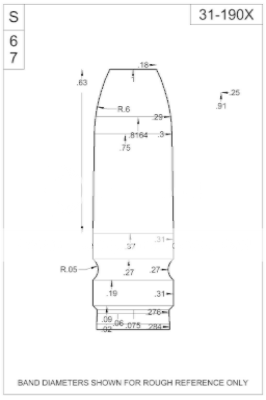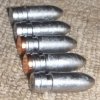Ian
Notorious member
The difference between MP moulds and BRP moulds is the hand-finishing after the machine boring. Also, either Bruce's toolmaker put a microscopic radius on every sharp point of the cherry, or they wore that way. MP moulds are razor-sharp in all aspects, fine machining for machining's sake, but lousy for moulds that need to provide a little wiggle room for bullet release.
The blocks weren't canted from vertical, they were out of line horizontally. Miha cuts the moulds one half at a time, and the tool works its way down the line. If the block face is at an angle to the path of the tool head moving from one cavity to the next, it will cut the cavity deeper on one end than the other. When two of these mis-aligned blocks are put face-to-face, the cavities are still perfectly round, but the parting line will intersect off-center of the bullet centerline, opposite sides on opposite ends. If there had been a cavity in the middle the lines would have intersected in the center of the bullet. As it was, the bullets on the ends, where the offset was worse, had more sticking issues than the two inner cavities. The reason why the blocks were out of line is because they were faced on a slight taper, not because they were jigged improperly in the mill during the cavity cutting operation. All this is easily measured.
The blocks weren't canted from vertical, they were out of line horizontally. Miha cuts the moulds one half at a time, and the tool works its way down the line. If the block face is at an angle to the path of the tool head moving from one cavity to the next, it will cut the cavity deeper on one end than the other. When two of these mis-aligned blocks are put face-to-face, the cavities are still perfectly round, but the parting line will intersect off-center of the bullet centerline, opposite sides on opposite ends. If there had been a cavity in the middle the lines would have intersected in the center of the bullet. As it was, the bullets on the ends, where the offset was worse, had more sticking issues than the two inner cavities. The reason why the blocks were out of line is because they were faced on a slight taper, not because they were jigged improperly in the mill during the cavity cutting operation. All this is easily measured.


